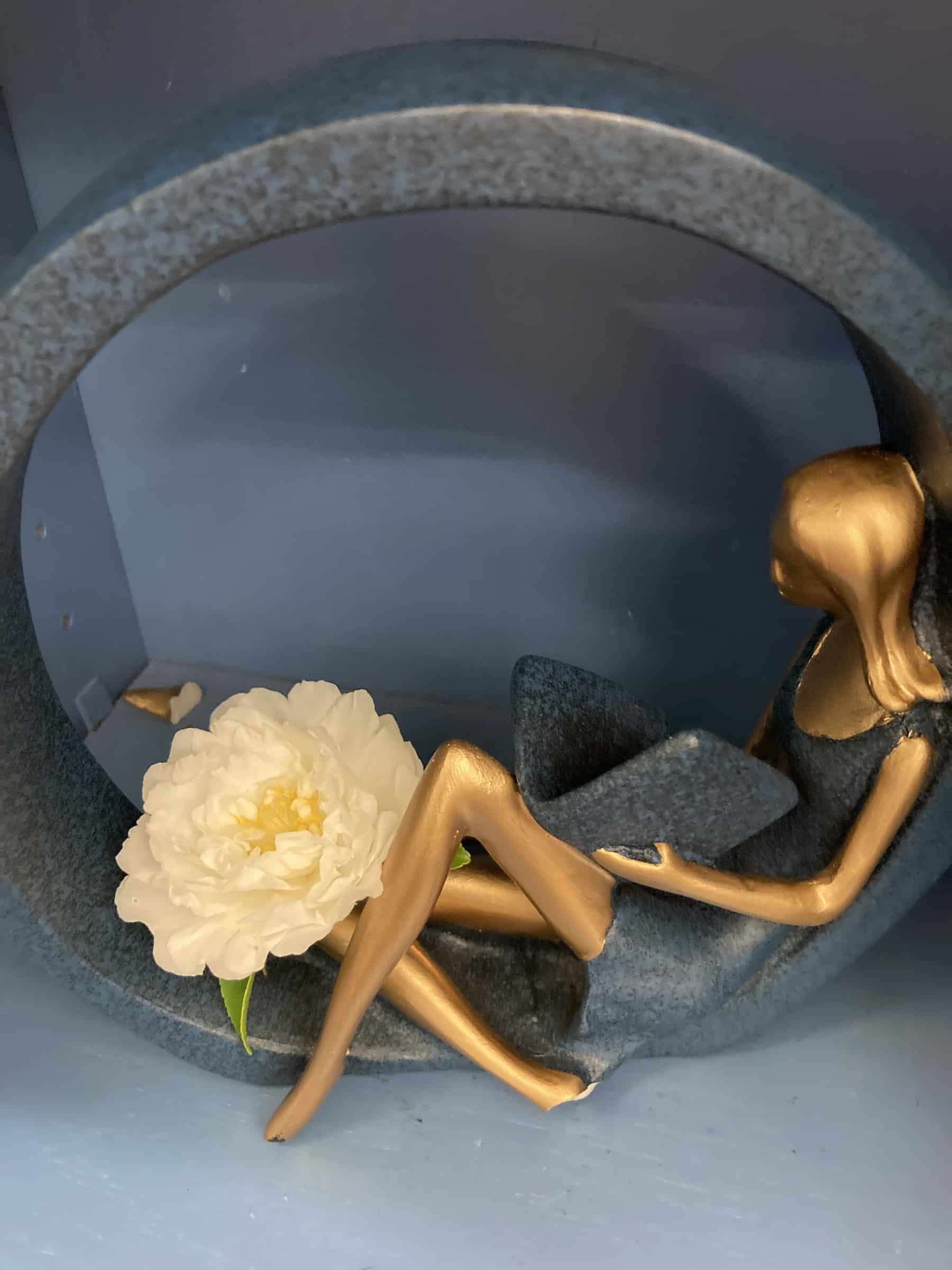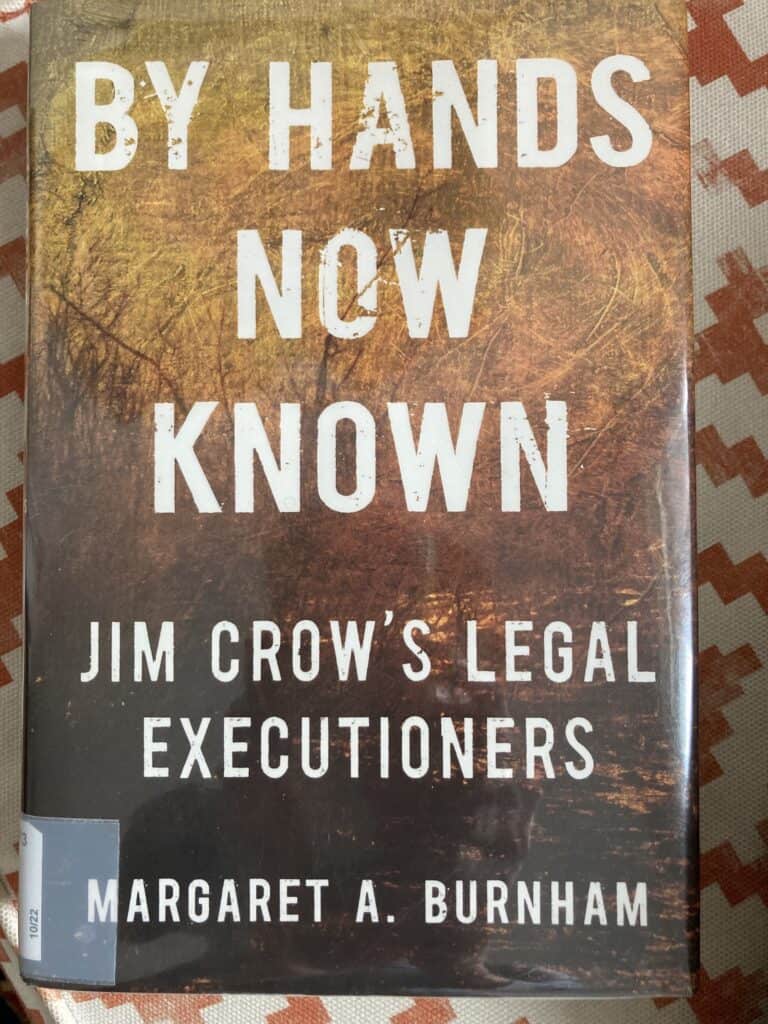
By Hands Now Known
I have been reading about my American South’s racial violence for over twenty years, and yet, “By Hands Now Known,” caused me to go get a rosary to hold while reading.
The full name of the book is a clue to its unsettling nature: “By Hands Now Known: Jim Crow’s Legal Executioners.” Margaret A. Burnham’s book is filing a gap she identified in coverage of America’s racial history. Many of our writings focus on the Civil Rights Era (as much of my reading has done), but Burnham flipped back a few years to Jim Crow. Jim Crow reigned between the end of Reconstruction and the Civil Rights Era, approximately 1877-1954. The violence during this era usually focuses on lynchings, such as Sherrilyn Ifill’s book I reviewed here. Attorney Burnham writes instead about violence by the legal system itself: police, sheriffs, deputies, judges, and district attorneys. You can see why that would make for hard reading.
Names Always Known
The title of the book is a play on words. Back in the day, coroners issued death certificates for “death by hands unknown,” when everyone in town knew damn well whose hands had killed the victim. In the cases Burnham recounts, the system protected the killers because the killers were the system. Sheriffs and police killed. The district attorneys then refused to charge. Or they miraculously did charge but judges gave instructions that assured an acquittal. All of one deadly piece.
Much of what Attorney Burnham accomplished isn’t on the page. It’s hidden in the research. Burnham and her team had to dig to flesh out the meager records on many of the killings she documents. Of course, there would be no documentation. Committed by the law, the killings were still outside the boundary of law and mostly treated as if they didn’t exist. But Burnham resurrects them.
The Feds Knew the Names
For me, the most galling of these stories involves federal district attorneys. When Thurgood Marshall or others affiliated with the NAACP’s Legal defense Fund were finally able to get the Justice Department’s attention. Finally able to make the FBI investigate. Finally able to show the locals were wrong with their convoluted, unbelievable stories. Finally able to get eyes on the killing. Then the federal DA—not the small-town local officials, but men supposedly representing the federal government—stonewalled. Or drug their feet. Or out and out refused to prosecute. Their role makes it clear the white system—not “criminals”—was behind these killings, working overtime to uphold white supremacy.
Names Now Known
Part of the loving service Burnham performs in, “By Hands Now Known,” is to name names. Not just the names of the killers, but the names of those killed. The names of their wives. Their daughters. Their brothers. She tells their stories. Who their mama’s and daddies were. What they did for a living. What dreams they dreamed. She makes them people, a basic respect that those who killed them refused to grant. Their stories stick with you. Thus the need for the rosary: the white system deliberately killed good people to uphold the racist system. That type of soul-crushing violence is hard to take.
And Now…
Burnham is very light in making the connection between the killings she’s reporting and our current legal system. Occasionally, she mentions parallels. Trayvon Martin dying from vigilante policing of Black movement. George Floyd’s killing at the hands of police. Mostly, she lets the facts speak for themselves.
Which doesn’t mean she isn’t concerned about the continuing influence of these injustices. Her final section is devoted to making the case for prioritizing reparations when violence, such as she documents, was perpetrated by the state itself. Our justice system, she says, has a lot of repairing to do, particularly when the breaches are still ongoing.

By Names Now Known, Jim Crow Killings, Jim Crow violence, Margaret A. Burnham, racist federal district attorneys, White supremacy killings during Jim Crow
Joanne Corey
As I read your final section about drawing parallels, I was thinking about Rachel Maddow’s podcast “Ultra.” She also is spare in drawing parallels, but the telling of previously forgotten or covered-over history is so stark that the parallels are blatant in my mind.
Ellen Morris Prewitt
I’ve been hearing about that podcast so much. I need to check it out. The light touch, let people make their own connections. It’s a good way.